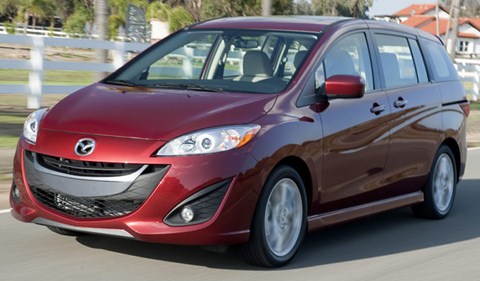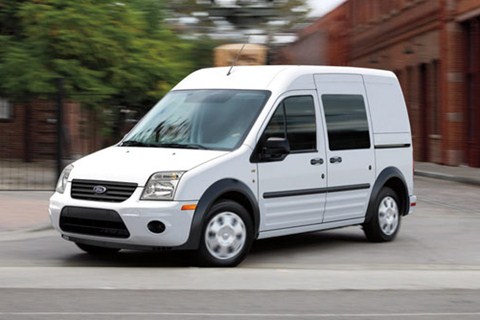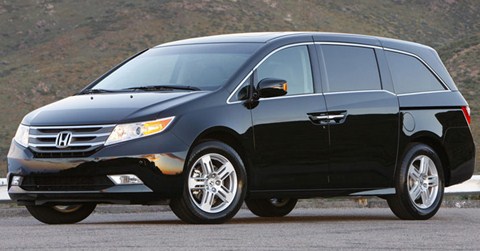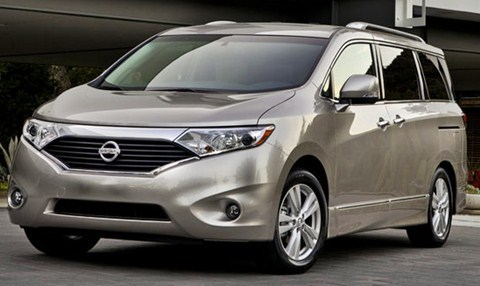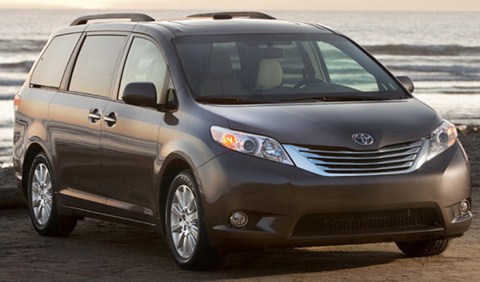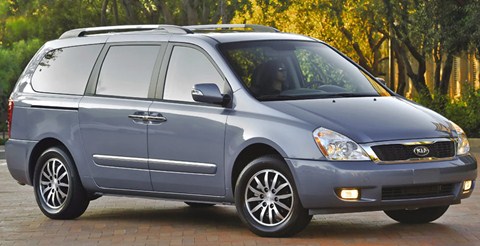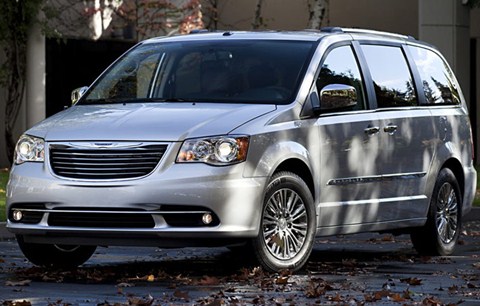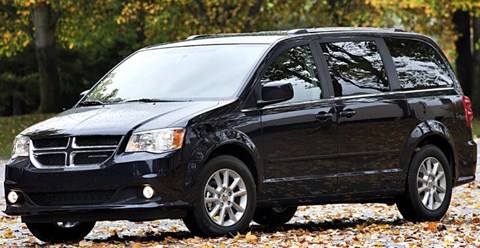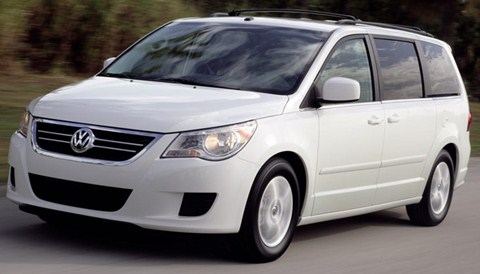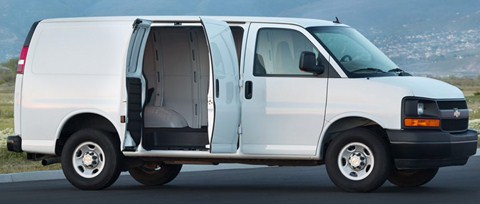Best all-electric high-tech car: Tesla Model S
Tesla’s advantage is that it has so little experience building cars that it doesn’t know what it can’t do. The all-electric Model S sedan (from $57,400) features a massive, 17-inch central touchscreen in its dash that not only allows access to the car’s functions but also provides a direct, full connection to the Internet. That includes video display even while the car is in motion—something never available from established car manufacturers. Of course, the Tesla Model S system will also take media from smartphones or other media players through Bluetooth and two USB connections, but the screen is what makes everything so usable.
Check out the bumper-to-bumper review on Edmunds.com.
The test-drive
Tesla’s flagship four-door sedan is arguably more computer than car. This all-electric vehicle seats five people, goes from 0 to 60 in 5.6 seconds, and starts at $52,400 (with a 40kWh battery and after a $7500 federal tax credit). But it’s not the Tesla’s electric powertrain that we’re interested in—it’s all the tech inside the car, which includes two screens (one of which is the 17-inch touchscreen) powered by separate Nvidia Tegra 3 processors.
A massive touchscreen
The first thing you’ll notice when you hop into the Model S is the enormous 17-inch touchscreen that completely replaces the typical head unit. The Model S has just two physical buttons on the head unit: a hazard-light button on the left, and a glove-box button on the right. The rest of the controls, including those for media, navigation, door locks, and climate control, are located within the touchscreen.
The screen has a glossy finish and is slightly angled toward the driver. It’s bright, and it appears to have an antiglare coating, as it’s quite easy to see in direct sunlight (such as when the Model S’s sunroof is open). Of course, you can adjust the brightness, and you can switch it over from black on white (day mode) to white on black (night mode) if the contrast is too much to handle.
User interface
You’ll find three main sections in the touchscreen. Along the top are basic stats (battery, 3G connection status, time, temperature) and icons for the car’s built-in apps, including those for navigation, energy, the Web browser, the rear-view camera, and phone functions. The middle section of the screen is where the apps appear—you can show two apps in a vertical split-screen format, or you can maximize one app to take up the entire section. Finally, the lower portion of the screen is reserved for the car’s settings, including access to the power sunroof and cabin climate controls.
The Model S has built-in GPS as well as a 3G cellular connection, so it can offer native navigation with a Google Maps overlay. You can control navigation by touch and voice, and the Maps overlay means you can search Google for points of interest. The Model S also sports an HD rear-view camera that you can access at any moment—even if you’re driving forward at 65 mph on the freeway. The Model S connects with your phone via Bluetooth, but I couldn’t get our test model to recognize my Samsung Galaxy Note II.
The Web browser
The Web browser, however, is unique. Sure, other cars let you surf the Web to a limited extent, but Tesla’s browser is nearly full-featured. It doesn’t support Flash or HTML5, which means it can’t play streaming video (there’s a law against that), but that’s about all it can’t do. In my test-drive of the Model S, I used the Web browser extensively in an effort to see just how useful it was. It’s similar to a tablet browser—a URL bar appears along the top, and when you tap somewhere near a text box, a QWERTY keyboard pops up at the bottom of the screen.
The keyboard is easy enough to use, but it doesn’t have a Shift feature like most phones and tablets do (that is, the ability to capitalize one letter and then go back to lowercase). Instead, when you tap the Shift key, it stays on until you tap it again to turn it off. This isn’t a huge deal, but since I’m used to tablets and phones, it was a bit disorienting at first. And, let’s be serious—being disoriented on the road is never a good thing.
The Web browser supports full (not mobile) websites, and accepts the ubiquitous pinch-to-zoom multitouch gesture. The Model S’s touchscreen is relatively snappy and responsive, though it’s not quite as responsive as it needs to be for Web browsing to be completely seamless. For example, I sometimes had to tap a link a couple of times before my command went through. Once, when I pinched to zoom, there was just enough lag that I had to put my eyes back on the road and then look back to the screen to see if it was zoomed.
Now, to be fair, I’m not sure anyone should be using the Web browser while driving at freeway speeds. Although Tesla doesn’t explicitly warn against it, the company doesn’t exactly suggest that you try to write work email from the road. Nevertheless, a 17-inch touchscreen is perhaps just a little too tempting for otherwise bored drivers.
A second screen
The Model S doesn’t have just one screen, though—it has two. The second screen replaces the instrument cluster behind the steering wheel, and runs on its own Nvidia GPU. This screen has three sections: the center section, which houses basic stats (speed, for example, as well as estimated range), and two sections on either side that you can customize to suit your needs. If you use the Tesla’s built-in turn-by-turn direction system, directions automatically push to the left side of the instrument-cluster screen so that you don’t have to take your eyes off the road more than necessary.
You primarily control the instrument-cluster screen by way of the steering wheel buttons, but you can also control it (somewhat) by voice. The steering wheel has two scrolling push-wheel buttons on either side (the left button defaults to volume, unless you push it in to control the left side of the screen). The steering wheel also has standard controls, including a phone button and a voice-control activation button.
Relatively awesome
It’s difficult to compare the Model S’s tech offerings with those of other cars on the road today. Did I mention that this thing has a 17-inch touchscreen instead of a head unit? That said, after my initial geeking out over the awesomely large touchscreen, I had a few concerns.
First, the touchscreen is only relatively responsive, where “relatively” means “relative to other touchscreens in cars today.” And if you’ve seen other cars today, you know that that doesn’t mean much, since most cars seem to be driving around with 1990s-style touchscreen technology. The Model S’s touchscreen is nowhere near as snappy as an iPad, which might cause problems if you try to use it in traffic.
Second, the all-digital head unit is attractive, but it sacrifices usability. When you’re driving in traffic at freeway speeds, it’s much easier to glance at a traditional head unit—complete with ordinary knobs and buttons—and see the controls you want to hit immediately. The physical depth of knobs and buttons lets you better gauge where you want to press (or turn) when you’re busy driving.
But when you quickly glance at the Tesla’s head unit, all you see is a wide, flat screen. While it is sexy and technologically awesome, it’s not as usable as something with bumps and ridges. I’m not saying it’s impossible to use—the designers at Tesla actually made it about as simple as they could—but there’s no denying that physical controls are easier to work your way around (both with your eyes and your hands).
Bottom line
The Tesla Model S is probably the most technologically advanced car on the road today, and that can mean both good and bad things. It’s certainly pretty to look at and fun to drive, but I’m not convinced that a buttonless car interface is the future.







